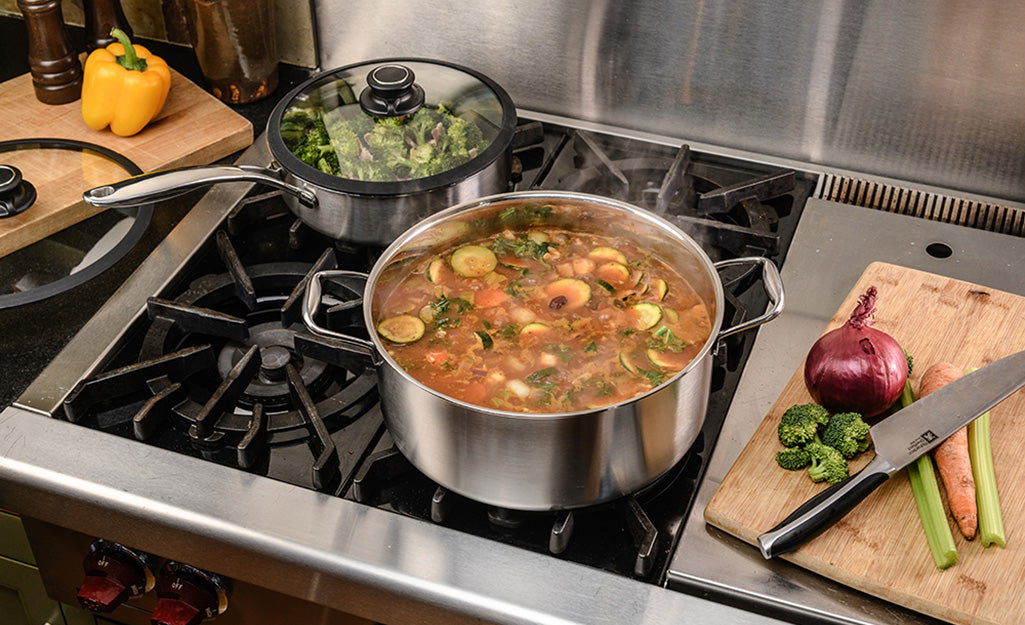When you're working in a kitchen, having the right tools is crucial. The life of your cookwareespecially cast ironhinges on proper maintenance, and one question that frequently arises among professionals is: what temp to season cast iron with avocado oil? Understanding the best temperature to season your cast iron cookware can significantly influence the quality and longevity of your equipment.
Avocado oil, known for its high smoke point and health benefits, is an excellent choice for seasoning. Not only does it create a non-stick surface, but its nutritional profile also makes it a favorite among kitchen professionals. In this article, we will delve deeper into the most effective ways to season cast iron pans and skillets using avocado oil, ensuring your cooking remains top-notch.
:max_bytes(150000):strip_icc():format(webp)/__opt__aboutcom__coeus__resources__content_migration__serious_eats__seriouseats.com__images__2016__09__20160817-cast-iron-pan-vicky-wasik-collage-1500x1125-a15711a84a054cca9268b8ddda1e5dd2.jpg)
The Importance of Seasoning Cast Iron
Before exploring the precise temperature for seasoning with avocado oil, let's discuss why seasoning cast iron is so vital. Seasoning forms a protective layer on the cookware, preventing rust and ensuring easy food release. This is particularly important for kitchen professionals who operate efficiently and want their cookware to perform optimally.
Understanding the Basics
Seasoning involves applying a layer of fat or oil to the surface of the cast iron and heating it to a point where it polymerizes. The oil bonds to the skillet, forming a non-stick surface that promotes even cooking and reduces the need for excess oils when preparing meals.
What is the Perfect Temperature?
So, what temp to season cast iron with avocado oil? The ideal temperature range falls between 400 to 500 degrees Fahrenheit (200-260 degrees Celsius). Heating the cast iron to this range allows the oil to polymerize effectively. This process ensures the seasoning layer is robust and durable.
Step-by-Step Guide to Seasoning your Cast Iron
1. **Preheat your Oven**: Start by preheating your oven to 450 degrees Fahrenheit (232 degrees Celsius).
2. **Clean the Cast Iron**: If your skillet is older or seasoned from previous use, clean it thoroughly using warm water and a mild soap. For deeper cleaning, refer to this guide on cleaning cast iron.
3. **Apply Avocado Oil**: Pour a small amount of avocado oil onto a paper towel or cloth, and spread a thin layer across the pan's surface, including the handle and underside.
4. **Remove Excess Oil**: It's crucial not to leave excess oil; wipe off any that pools in the bottom of the skillet as it can lead to a sticky surface.
5. **Place Upside Down in Oven**: In order to prevent oil pooling, place the skillet upside down on the oven rack. You can place a foil sheet on the rack below to catch any drips.
6. **Bake for an Hour**: Allow the pan to bake for about an hour. This is when the magic happens as you see the oil move from liquid to solid.
7. **Cool Gradually**: After an hour, turn off the oven, and let the skillet cool inside. This gradual cooling aids in forming a stable surface.
How Often Should You Season?
Generally, seasoning should be done every few months depending on usage. If you notice food sticking to your cookware, it may indicate that your seasoning has worn off, and its time to apply a fresh layer. You might visit this guide on seasoning cast iron for helpful tips.
Signs Your Cast Iron Needs Seasoning
1. **Rust Formation**: If you notice rust, it's time to strip and re-season.
2. **Food Sticking**: Difficulty releasing food is a clear indicator of insufficient seasoning.
3. **Discoloration**: If your skillet looks dull rather than shiny, it may need a touch-up.
The Benefits of Using Avocado Oil
So why choose avocado oil for seasoning? Here are a few compelling reasons:
- High Smoke Point: With a smoke point around 520 degrees Fahrenheit (271 degrees Celsius), avocado oil withstands high temps without breaking down.
- Nutritional Benefits: Avocado oil contains healthy fats, promoting better cooking and health.
- Neutral Flavor: Unlike many oils, it has a mild flavor, ensuring it wont impact your dishes negatively.
Common Mistakes to Avoid
1. **Using Too Much Oil**: This can lead to a sticky surface instead of a smooth finish.
2. **Not Cleaning Properly**: Residues can affect the seasoning process. Make sure you follow a thorough cleaning routine.
3. **Skipping the Cooling Process**: Let the cast iron cool inside the oven to create a better bond.

Frequently Asked Questions (FAQs)
-
Can I use other oils?
Absolutely! While avocado oil is excellent, alternatives like flaxseed, grapeseed, or vegetable oil can also work well. -
Is it possible to over-season?
Yes, over-seasoning can lead to a thick, sticky layer thats challenging to manage. -
What do I do if my seasoning flakes off?
This indicates the need for re-seasoning. Strip the seasoning and start over using the method outlined above.
For additional insights, check out this informative article on the importance of maintaining your cast iron cookware.
This article contains affiliate links. We may earn a commission at no extra cost to you.





Leave a comment
This site is protected by hCaptcha and the hCaptcha Privacy Policy and Terms of Service apply.